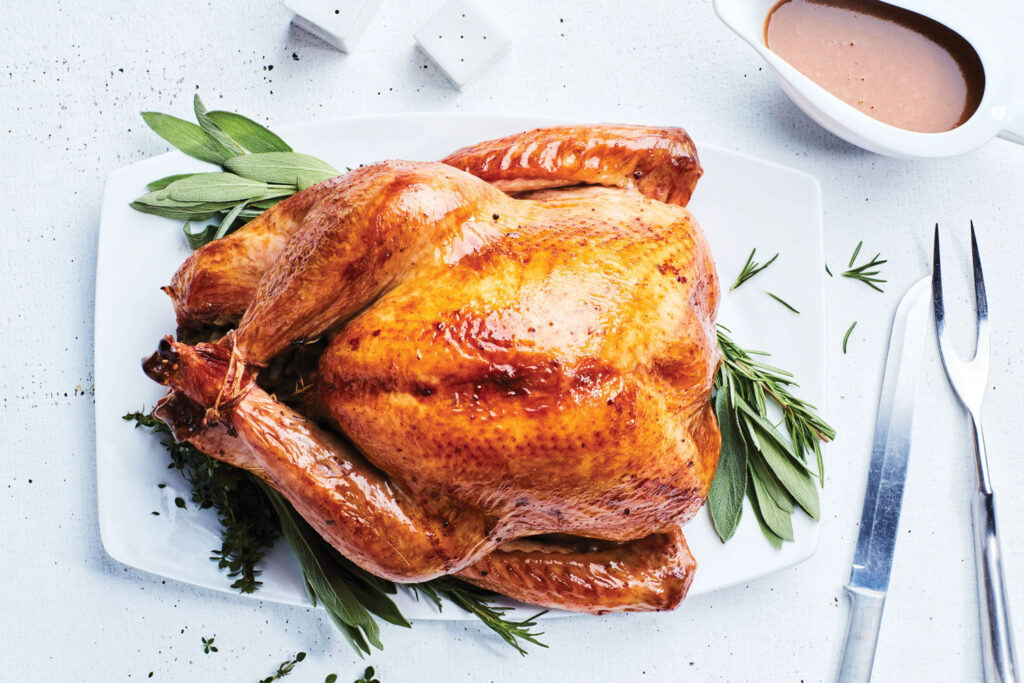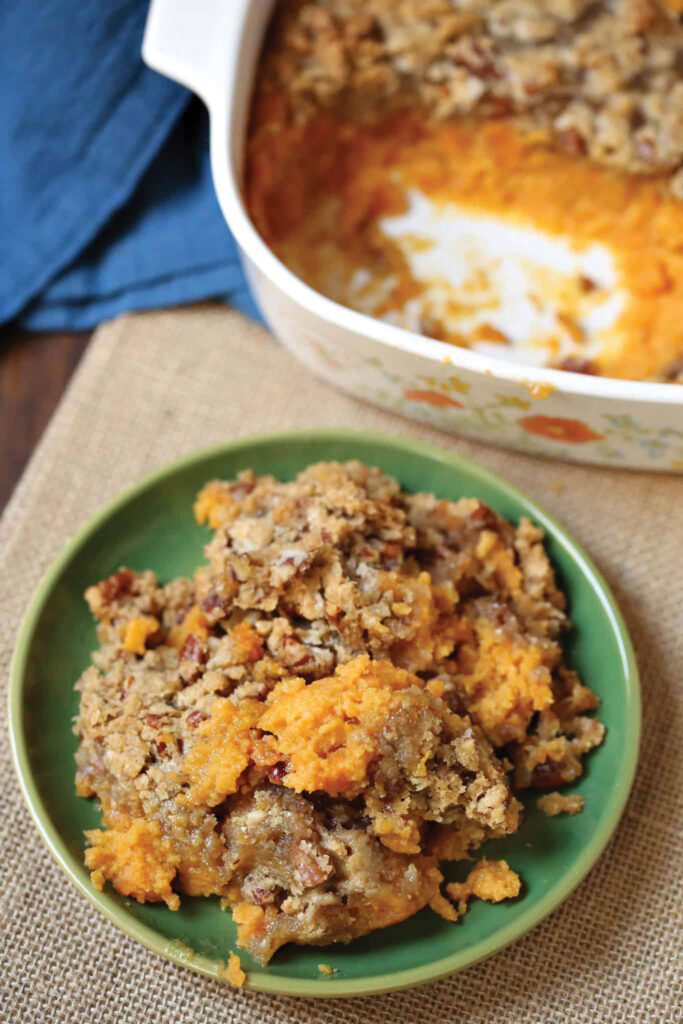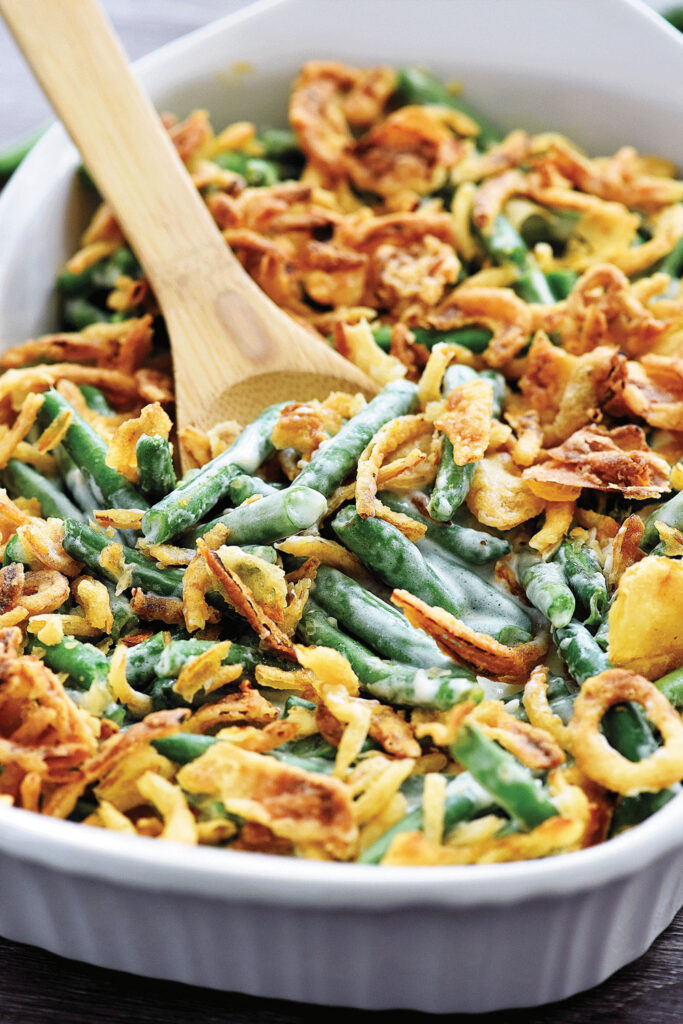Why Turkey? A History of Holiday Food
By Avery Walker
Thanksgiving is a time for giving thanks for all the blessings we have received during the year, and for celebrating together with friends and family. For most Americans, Thanksgiving also means partaking of a huge holiday dinner. In fact, studies have shown that Thanksgiving dinner tends to be the highest caloric intake of the year, with the average American consuming over 4,000 calories in a single meal. Comfort foods such as Turkey with dressing and gravy, pumpkin pie, and baked sweet potatoes have become synonymous with the Thanksgiving meal. Have you ever wondered how these foods ended up on our holiday tables?

Turkey
Though it is hard to say what was actually served at the gathering between the Plymouth settlers and the Native Wampanoag tribe that has been called the first Thanksgiving dinner, we can be nearly certain that turkey was on the menu. Having been domesticated in Mexico, turkeys were brought to Europe by Spanish explorers and were already a favorite food by the time pilgrims brought them to North America. Though the Plymouth settlers surely brought a few of these birds to the table, they were likely not the centerpiece. Venison, duck, and various types of seafood were probably a big part of that first Thanksgiving dinner. Nevertheless, the turkey still carries the title of the most popular Thanksgiving food, with an estimated 46 million of the birds being consumed each year during the holidays.
Cranberry Sauce
Cranberries are native to the New England area, and were already a staple of Native American culture, used not only for food, but also as medicine and dye. Both the Native Americans and early settlers were known to boil the berries down with sugar to create a sauce that they served with meat as early as the 1600’s. It was not until the early 1900’s that a lawyer named Marcus L. Urann made cranberry sauce widely available by producing the canned jelly-like version of cranberry sauce that many Americans have come to either love or hate. Regardless of personal feelings about the sauce, you are almost sure to see it served alongside most turkeys on Thanksgiving tables around the country.
Pumpkin Pie
An indigenous American plant meets the English tradition of putting things into pies in this traditional holiday dessert that dates back to the 1600’s. Pumpkins, as we know them, were likely domesticated first in Mexico, then traveled to Europe and back again with early North American settlers. The English were the first to put them in pies, though those pies were not the sweet, creamy delicacies that we are familiar with today. The American version of spiced pumpkin pie became popular in the 1800’s and has stood the test of time as an important Thanksgiving dessert.

Sweet Potatoes
Whether you call it sweet potato casserole or candied yams, these nutritious tubers topped with sugary confections are one of the youngest members of the traditional Thanksgiving menu. Though sweet potatoes were already a staple food in the south thanks to French and Spanish settlers who first brought them to Louisiana, they took some time to make their way north. Marshmallows were not widely available until the early 1900’s and had previously been known only as a French delicacy. The first recipe for mashed sweet potatoes topped with marshmallows was released by a marshmallow manufacturer in 1917, and the recipe quickly became a favorite for holiday meals.

Green Bean Casserole
Green beans may have been on the first Thanksgiving table along with other vegetables, but the casserole we know and love was actually developed as a promotion for Campbell’s cream of mushroom soup. Using convenient canned food that was widely accessible and non-perishable, the recipe quickly caught on when it was introduced by Campbell’s employee Dorcas Reilly in 1955. Even the pickiest eaters will often eat green beans when they are prepared as part of this holiday comfort dish.
Apple Cider
Perhaps one of the oldest holiday favorites is apple cider. Introduced to the English by the Normans in 1066, it soon became one of the country’s favorite drinks. The sweet and tangy beverage was often considered to be safer to drink than water. English colonists in New England brought the drink to the Americas, planting apple orchards in the Massachusetts Bay colony. Because pressing and storing the juice from apples was one of the best uses of a large harvest, it quickly became one of the most common beverages consumed by settlers. Whether you like it hot or cold, spiced or plain, there is no doubt that apple cider has become synonymous with fall and the holiday season.
Macaroni and Cheese
Though not a strictly traditional Thanksgiving food, macaroni and cheese is a favorite in many households both during the holidays and throughout the year. The dish dates back much further in Europe, particularly France, but it was not popular in the United States until Thomas Jefferson made it his mission to replicate the pasta he had tasted in Paris. After the president served macaroni and cheese at a state dinner in 1802, it was only a matter of time before it became the popular dish we know today.
Over time, Thanksgiving has become a beautifully varied meal, infused by the many cultures and peoples represented in the United States. Whether your family eats these dishes or different foods that reflect your heritage and personal tastes, there is one thing that binds us together with all the Thanksgiving dinners of the past: the belief that the best meal is the one that is received with a heart of thankfulness and shared with family and friends.

